Luofu Mountain Scenic Area
Luofu Mountain Scenic Area is a national AAAAA level scenic area. It is located on the Dongjiang River of Guangdong Province, 35 kilometers away from Boluo County, Huizhou City, and borders Zengcheng and Longmen Counties. It covers an area of 260 square kilometers. There are 432 mountain peaks, 980 famous waterfalls and springs, 18 wonders of cave sky and 72 pyroclastic rocks in the cave. The mountain is magnificent with beautiful natural scenery. Luofu Mountain, known as the first mountain in Lingnan, has been known as Xianshan since Qin and Han Dynasties. Sima Qian, a historian, compared Luofu Mountain to "Yue of Guangdong", which is one of the top ten famous mountains in China. It is also a famous Taoist mountain in China. Taoism calls it the seventh cave heaven and the thirty-fourth blessed land. The Xiqiao Mountain in Nanhai County is also called the Erqiao Mountain in South Guangdong Province, so it is also known as the Dongqiao Mountain. It is China's "National Key Scenic Spot" and summer resort, known as "the first mountain in Lingnan". Su Dongpo of the Northern Song Dynasty once made the following work here: "Louvre Hill is in the fourth spring, Luju bayberry is in the new place. Three hundred litchis are grown in the Rigao Mountains, which are famous for their long history as Lingnan people, making the Louvre Mountains famous all over the world.
On December 19, 2013, according to the announcement of the National Tourism Scenic Area Quality Grading Committee, Luofushan Scenic Area was approved as the first national 5A scenic spot in Huizhou and the Ninth National 5A scenic spot in Guangdong Province.
Luofushan Scenic Spot is located in the northwest of Boro County, Huizhou City, Guangdong Province, along the Dongjiang River. It spans Boro County, Longmen County and Zengcheng City, 35 kilometers away from Boluo County, Huizhou City, and borders Zengcheng and Longmen Counties. It is 25 kilometers from Boluo County, 60 kilometers from Guangzhou in the west, 45 kilometers from Dongguan in the south, 150 kilometers from Shenzhen in the East and 55 kilometers from Huizhou in the east. Located at 23 degrees east longitude and 114 degrees north latitude.
Geological formation
In The Chronicle of Counties and Counties in the Book of the Later Han Dynasty, later generations made notes describing Luofu Mountain in this way: "Boro has Luoshan, which is named Luofu because of its self-examination by Fushan". It means that Luofu Mountain was formed by the collision of Luoshan and Fushan, but this is only a legend. According to the textual research of geologists, Luofu Mountain was formed 80 million years ago. The crust of this area was faulted and the granite body was uplifted by compression. After years of wind and rain erosion, the Louvre Mountains now stand at odd peaks.
natural resources
Luofu Mountain is just on the Tropic of Cancer. It belongs to subtropical monsoon climate. It has abundant rainfall and dense plants, and its vertical distribution changes obviously. The top of the mountain is low shrub and meadow, the hillside is shrub and pine forest, and the bottom is evergreen broad-leaved forest. There are more than 1200 kinds of medicinal plants and fruits growing on the mountain. There are more than 1200 kinds of medicinal plants in Luofu Mountain. There is a natural Chinese herbal flower bank. One of the four cities in eastern Guangdong is located on the left side of Chongxu Ancient View in Luofu Mountain, which is called Dongtian Pharmaceutical City. Famous local specialties such as crisp mashed vegetables, Yunwu sweet tea and rich citrus, orange, orange, grapefruit, litchi, longan, persimmon, Bayberry and other Lingnan fruit have unique flavor. Su Dongpo's "Loufu Mountains at four o'clock in spring, Luju bayberry next new. The poem of "three hundred litchis in the sun and the people in the south of the Yangtze River" is a true portrayal of the fruits abound in the Louvre Mountains.
Main attractions
The three main features of Luofu Mountain are: strange peaks and rocks, famous waterfalls and springs, and wonders of the cave sky. There are 432 peaks in Luofu Mountain. The most famous ones are Feiyun Peak, Tieqiao Peak, Yunu Peak, Camel Peak and Shangjie Peak. Among them, Feiyun Peak is the main peak, with a sea dial of 1296 meters. It is named for its towering towers into the clouds. There are more than 980 famous waterfalls and springs in Luofu Mountain, including Baili Waterfall, Baishuimen Waterfall, Huanglongdong Waterfall, Bailian Lake, Furong Pool, Changsheng Well and Zhuoxi Spring, which was praised by Su Dongpo, a scholar of the Northern Song Dynasty. There are 18 cave days in Luofu Mountain, including Zhuming, Penglai, Taoyuan, Butterfly and Night Music. There are 72 cave days such as Tongtian, Luohan, Fuhu and dripping water. Among them, Zhuming Cave is the largest cave on the mountain.
Hua Shou Temple
Huashou Temple, also known as Huashou Temple, is located in the southwest of Luofu Mountain. Huashou Temple was built in 26 years during the first year of the Tang Dynasty. It has a history of more than 1200 years. It is said that 500 real people gathered here and got its name from Huashou Temple. During the Ming and Wanli Dynasties, there were 18 temples in Luofu Mountain, and Huashou Temple was listed as the "First Zen Forest". The original Drum Tower, Bell Tower and Hall were destroyed during the Cultural Revolution, leaving only broken walls. It was not until 1987 that Mr. Kwan Yaochang, a compatriot of Hong Kong, raised a huge amount of money to rebuild it. The newly built Huashou Temple has more than 10,000 square meters and takes more than one hour to visit. The main Buddhist buildings are Wanghai Guanyin, Tianwang Hall, Wanfo Pagoda, Daxiong Palace, 500 Arhats Hall, etc. Huashou Temple not only has a long history of Buddhism, but also countless natural landscapes and cliff stone carvings. The most representative cliff stone carvings are "Lingnan First Mountain" and "Wenzhongfa Province". The most famous natural landscapes are "clouds splashing snow" waterfalls and millennial silver-smelting ancient trees.
Crisp mash
In the deep valleys north of Luoshan Mountains and south of Fushan Mountains, the crisp cave is known as "the ancient cave of immortals" and "the Austrian area of sacrificing spirits and the blessed land of cultivation". It's a beautiful place in the cave. It leans back on the green hills, facing the lotus marsh and two mountains beside it. The Pavilion at Zuotai and Youting is magnificent. It is the old site of Gehong Beian. After Ge Hongxian's death, Bei'an became increasingly decadent. During the Tang and Song Dynasties, Taoists built their views on the old site of Bei'an, and named them the "Crisp Mash View". As a result of years of disrepair, the view of the world is declining. During the period of the Republic of China, Zhang Yuquan and his Daozhong colleagues, who had lived by Su Yuguan for more than 40 years, gathered huge sums of money to rebuild the palace. It was completed in May in the year of Geng Wu (1930). The total area of Taoist temple is more than 2,700 square meters. The main hall walls have inscriptions such as "Rebuilding the Inscription of Crisp Mash", "Rebuilding the Inscription of Crisp Mash", "Rebuilding the Inscription of Crisp Mash Mash", "Crisp Mash Forest Garden Plum Planting Books" and "Strictly Prohibited Stele by the Constitution". The temple is dedicated to Leizu, Lv Zu and Gezu. The main hall extends 8 meters long and 4.75 meters wide to the courtyard. It is the place where the disciples are presiding over the practice of prayer transmission. There are centuries-old tea trees in the courtyard. There are pots of "Jubao Furnace" in Qing Dynasty and ancient ballast beds that Chiang Kai-shek, Chen Jitang and Cai Tingkai slept in.
Huanglong Guan
Huanglong Cave is located in the southern foot of the Louvre Mountains, under the Yunu Peak. It is one of the famous eighteen cave wonders of the Louvre Mountains. It is the site of Gehong Xi'an and the Tianhua Palace built by Liu Yan, king of the Southern Han Dynasty. During the reign of Kangxi in the Qing Dynasty, Zhang Miaosheng, a Taoist monk of Chongxuguan, came to Huanglongdong to create an independent Taoist position of Laoshan School and named it Huanglongguan. During the Cultural Revolution, Huanglong Guan was completely destroyed, leaving a broken wall and tiles. By 1992, the local government had practically implemented various religious policies. At the invitation of the local government, Mr. Hou Baoyuan, the chief Taoist monk of Qingsong Guan in Hong Kong, spent a huge amount of money to rebuild Huanglong Guan. After many efforts, Huanglongguan was finally completed in October 1997. The total area of the reconstructed Huanglong View is more than 15,000 square meters. The reconstructed Huanglong View is magnificent and magnificent. It has become one of the main Taoist views with the largest area and the strongest religious and cultural atmosphere of Quanzhen Longmen School of Taoism in South China.
Chongxu ancient Taoist Temple
Chongxu Ancient Temple was founded by Gehong, a native of Jurong County, Jiangsu Province, in the second year of Xianhe in the Eastern Jin Dynasty (AD 327). This temple is the Nan'an of four temples in the east, south, West and north of Luofu Mountain, which has a history of more than 1670 years. Ge Hong built three more nunneries on three sides of Northwest Luofu Shandong, lecturing and writing books. He left 116 volumes of Baopuzi, Elbow Reserve Prescription, Immortal Biography, Jiyizhuan and Jinkui Prescription. Zhu Mingdong Nannan Temple is called Duxu, also known as Xuanxu. In 405 years after Ge Hong's death (the first year of Yixi in the Eastern Jin Dynasty), he was rebuilt as a shrine to offer sacrifices. In 714 (the second year of Kaiyuan in Tang Dynasty), the Ming Emperor sent Taoists to Luofu Mountain for rain. In 742 (the first year of Tianbao), a hundred feet altar was built to worship the mountain gods, and soon Shentaizhi was sent to worship the mountain. During the period, the governor of Xunzhou (now Huizhou) was ordered to come here to sacrifice and change the temple to be called "Duguan". Ten families were set up to guard and two Taoist priests were arranged for full-time sacrifices. In 809 (Tang and Yuan Dynasties and Four Years), Li Ao, Hanyu's proud pupil, also went to Chongxuguan Mountain for sacrifice when he was appointed to Xunzhou Zhifu. Bai Yuchan, one of the seven ancestors of the Southern Sect of Taoism in Chongxuguan in the Northern Song Dynasty, said that "at this time Daxian, Suixing Guanxiang". In 1087 (the second year of Song and Yuan Dynasty), the imperial edict changed its name to Chongxu, which has been used up to now. As for today's plaque written by Ruilin, the Qing Dynasty envoy of Chongxuguan Gate, there are more than one word "ancient" in it, which became Chongxu ancient view. What we see now is Chongxu ancient view rebuilt during Tongzhi period of Qing Dynasty, including the Temple of Protecting the Family, the Temple of Three Qings, the Temple of Lv Zu, the Temple of Chisong Huangxian, and a total of more than 100 Danfang, Zhaitang and Kufang. The building area of the whole Taoist temple is more than 4400 square meters. It is said that Huang Daxian in Hong Kong, Shanghai, West Lake of Hangzhou, Malaysia, Singapore and other places branch out from here. Chongxu Ancient View not only has a long history of Taoism, but also has a glorious page in the history of revolutionary struggle. In 1945, the headquarters of Dongjiang Column was located in Chongxu Guguan. Chongxu Guguan, as the old site of the headquarters of Dongjiang Column, was listed as the provincial key cultural relics protection unit by the Guangdong Provincial People's Government in 1979. In 1983, it was listed by the State Council as one of the 22 key sightseeing palaces in China. Today, Chongxu Ancient View has become a theme attraction for tourists to come here for money, happiness and sightseeing. As early as the early Republic of China, such military and political officials as Sun Yat-sen, Song Qingling, Chiang Kai-shek and Chen Jitang had personally visited Chongxu. From the 1950s to the 1960s, Premier Zhou Enlai and seven other marshals, such as Chen Yi, also visited Luofu Mountain. Among them, Premier Zhou gave specific instructions on the construction of the ancient concept of hedging the emptiness. He also allocated 22 Jinbo to refresh the statues in the Sanqing Palace and make them glorious. In 2004, former President Jiang Zemin also came to visit and give guidance.
Ge Xian Temple
The temple is dedicated to Ge Hong and Bao Gu. Ge Hong, Zi Zhichuan, Number Baopuzi, Danyang Jurong (now Jiangsu) people. Ge Hong lost his father at the age of 13. He lived in poverty and was eager to learn from his childhood. He went hiking to borrow books everywhere. Cut firewood up the hill and buy pens and paper. At night, firewood is often used to illuminate and read books. Sometimes, in order to borrow books or seek advice, they travel thousands of miles through mountains and rivers without stopping until they reach their goals. As a result of exposition of hundreds of classics, nearly 10,000 volumes, Confucianism is well-known. As a teenager, he began to write The Outer Chapter of Baopuzi. It is said that he is indifferent to oligarchy, not good for honor and profit. I don't like Starbook, Arithmetic, Nine Palaces, Three Chess, Taiyi, Flying Charm and so on. In the evening, we should learn the methods of Feng Jiao, Wang Qi, Sanyuan, Dun Jia, Liu Ren and Tai Yi, which are good ways to guide immortals. With Zheng Yin as a teacher, he got his alchemy and went south to Guangzhou. After a few years in Louvre Mountain, he returned home. Sima Rui (Rui) was Prime Minister and gave him the honor of his neighbour. Later, he served as governor of the prefecture, General Fubo, Stuart (complaint), consultation, military and other posts. I heard that Jiao Zhi gave Dan and asked for a leak order. After being detained by the assassinated Shi Deng Yue in Guangzhou, Deng Quanhong went to Luofushan to make alchemy. Gehong went to Luofu by boat for the second time. He stayed in Luofushan for 36 years. It has opened up Taoist holy places in Lingnan and built several temples in the east, west, South and north of Luofu Mountain. Eighty-one years old swallowed self-refining nine-turn gold Dan and became immortal in Luofu Mountain.
Ge Hong is knowledgeable and writes many books, far more than Sima Qian and Ban Gu. He is good at argumentation and metaphysics, and his analysis is very penetrating and meticulous. His main work, Internal and External Chapters of Baopuzi, is an important work in the history of Taoism, which has a complete theoretical system and a variety of prescriptions. It is an indispensable material for studying the history of Taoism before Jin Dynasty.
Dongjiang Column Memorial Hall
Dongjiang Column Memorial Hall was built and opened on December 1, 2003 and the 60th anniversary of Dongjiang Column. It is located in Zhumingdong Scenic Area, Luofushan Scenic Area. Three sides surrounded by mountains, in front of the beautiful Bailian Lake, not far from the right is the old site of the Eastern Vertical Command Chongxu ancient view. The surroundings are elegant and the scenery is pleasant. The name of the "Dongjiang Column Memorial Hall" is inscribed by Ye Xuanping, former vice chairman of the CPPCC National Committee.
The building area of the memorial hall is 3300 square meters. There are four exhibition halls and work service areas in the museum. Four halls are "prelude hall", "exhibition hall", "martyr hall", "projection hall", and two 60 meters long and 3 meters wide corridors. In the hall and Exhibition hall, a large number of documents, real historical photographs and precious revolutionary cultural relics fully reflect the revolutionary deeds of the Dongjiang column, the Guangdong-Guangdong-Hunan border column and the Guangdong-Jiangxi-Hunan border column. There are more than 70 cultural relics on display, mainly the living utensils of the Eastern Longitudinal soldiers and the weapons seized by the enemy. Important cultural relics include the printing press of "Qianqian Bao" of the Dongjiang column and the announcements issued by the Dongjiang column and the Guangdong-Jiangxi-Hunan border column in that year. The contents of the exhibition are divided into five parts: (1) the outbreak of the Anti-Japanese War and the formation of the people's anti-Japanese armed forces in Dongjiang; (2) insisting on the anti-Japanese war behind the enemy lines and establishing the anti-Japanese base area of Dongbao in Huidong; (3) the establishment of the Dongjiang column to win the anti-Japanese guerrilla war; (4) being ordered to withdraw from Shandong to fight in the north and south of the Yangtze River; (5) insisting on the southern Tour Strike to liberate the whole territory of Guangdong.
Hui Xian Bridge
Huixian Bridge is a single arch stone bridge with a width of 2.9 meters and a height of 3 meters. Its surface is made of bluestone strips, and its stigmas are carved with decorative tetragons. Legend has it that Su Dongpo went to Luofu Mountain in the first year of Sheng Dynasty. After drinking, he happened to encounter a village girl. Poetry rose and he chanted, "Seeking seclusion is better than going to Luofu, and using drunken sticks to find his way home." After the rain, the scent of mountain flowers is more beautiful. The village girl looks back at the oil poems of Xiangu. The village aunt, seeing that she was unrestrained, responded, "Dongpo has stopped traveling across the West Lake and invited the moon to be a madman. Right and wrong are just for more openings, remember that the imperial court depreciated you." Dongpo was shocked when he met Xiangu. When he looked back for her, it rained cats and dogs, and the stream surged and rushed back to the wooden bridge. As Tieguai Li passed by, he turned Tieguai into a bridge and let Su Dongpo cross the stream. Later generations built this bridge to commemorate Su Dongpo's meeting with He Xiangu and Tieguai Li. In the middle of the bridge slab is inscribed the words "Huixian Bridge", which was written by Qiu Fengjia, a famous patriotic poet in Taiwan, in the three years of Xuantong in the Qing Dynasty.
Hall of Lu Dong Bin
Lv Dongbin, one of the eight immortals, is enshrined in the Lv Zu Temple.
Lu Dongbin, a Taoist priest in Tang Dynasty, was regarded as immortal by post-Taoism. Lu surname, name rock, word Dongbin, name Chunyangzi, self-proclaimed Huidao people, Shanxi people. It is regarded as one of the five northern ancestors by Quanzhen Taoism, commonly known as "Lv Zu". Legend has it that Lu Dongbin, formerly surnamed Li, served as a scholar in the imperial clan of the Tang Dynasty. Because Wu Zetian massacred the descendants of the Tang Dynasty and wanted to live forever after he had given up official service with his wife, he retired to Bishuidan Mountain and changed his surname to Lu, often living under rocks. His former name was Rock, and because of the inscription of the word "Dongbin" on the stone tablet of Dongkou, he was captured for evading officials. So it's called Lu Dongbin. Legend has it that before its success, it happened to meet the Han Zhongli in Chang'an Restaurant, "Huangliang Dream" and then realized it and asked for its transcendence. Hanzhong's mind remained motionless after ten trials of life and death, so he was subjected to the single method of Jinye Dadan and Lingbao, and later met the real emperor of Fire Dragon. He passed on the method of worship by the sun and the moon and the method of Tiandu sword, claiming that he had "broken his greed, his lust, and his troubles" and vowed to live the whole world. It is recorded that the Song Dynasty feuded it as "Miaotong Zhenren". Ludong Bin's birthday falls on April 14 of the lunar calendar every year.
There are also many stories about Lu Dongbin among the people. It is well known that "Dogs bite Lu Dongbin and don't know the good people's hearts." This epilogue, which we saw in the TV play "Nacho", is because Lu Dongbin trapped the dog with his paintings. Later, the dog escaped and chased Lu Dongbin. However, there is another legend in our folklore. It is said that one day when Lu Dongbin was traveling in the clouds, he passed through the crisp cave in the north of Luofu Mountain and was attracted by the beautiful scenery of the crisp cave, so he built a mountain house in the crisp cave to stay for several days. One day, the other seven immortals came to him and happened to go out to practice sword in the back hill, leaving only a dog at the door. So the seven immortals used the immortal method to enlighten the dog and let the dog go and find Lu Dongbin. The master found it, but it could not speak. He barked at the master twice and dragged away with his mouth on the corner of Lu Dongbin's trousers. At this time, Lu Dongbin angrily said, "Dog, dog, I have never abused you, why do you bite me as soon as you come". After that, he left. Since then, the saying "Dog bites Lu Dongbin, and does not know the good people" has spread.
Cave scenery
The wonder of Dongtian is the most Taoist tourist landscape in Luofu Mountain. There are 18 large caves and hundreds of small caves in the whole mountain. The cave is not a cave, but a cave sky. It is a small world surrounded by several mountains and some ancient trees. Taoism calls it a cave or cave sky. The cave is quiet and fragrant, the spring is shining, the ancient Musensensen, the fragrance of birds and flowers, the cicada song and butterfly dance, and the scenery is charming. The best caves are Zhu Ming, Huatou, Baihe, Huanglong and Crispy Mash. Numerous Taoist cave heavens are the "cave heaven and blessed earth" practiced by immortals and Taoists in past dynasties. They are also places that literati and mockers yearn for and love for.
Historical culture
Historically, Taoism, Buddhism and Confucianism thrived and coexisted here for a long time. Celebrities of all dynasties also came to Louvre. Famous poets of all dynasties, such as Lu Jia, Xie Lingyun, Li Bai, Du Fu, Li He, Liu Yuxi, Su Shi, Yang Wanli, Tang Xianzu and Qu Dajun, admired and praised Louvre, leaving behind many excellent works, which made Louvre Mountain a success. Cultural mountain with rich cultural connotations. There are many praised inscriptions, excellent poems and scenic spots in Luofu Mountain. Among them, there are more than 200 key scenic spots, more than 180 cliff stone carvings and 13 religious temples. Chongxu Ancient View, located in Zhumingdong Scenic Area, was founded by Ge Hong, a famous Taoist theorist, alchemist and pharmacologist in the Eastern Jin Dynasty. It has a history of more than 1600 years. Ge Hong wrote more than 600 poems on Taoism, including 70 volumes of Bao Puzi's Internal and External Chapters, Elbow Waiting for Memory and Emergency Prescription, Immortal Biography, Jiyi Zhuan, Jinkui Prescription and Stele-chanting Poetry, which made Chongxu an influential Taoist resort in China. In modern times, the celebrities who have visited Luofu Mountain are Sun Yat-sen, Song Qingling, Liao Zhongkai, He Xiangning, Chen Jitang, Chiang Kai-shek, Zhou Enlai, Chen Yi, Lin Biao, Lin Wenlong and so on.
Taoist legends
According to legend, Taoism has 36 holes and 72 blessed places. All immortals live in recreational places. People all over the world think that the realm of heaven, auspicious and blessed, salty admiration. Taoist secluded practitioners like to live in secluded mountains and forests. Therefore, they often choose places with fairy tales to build palaces and temples, so that they can make contributions to the harmony of Taoism and gardens. Since the past dynasties, Taoist couples have stopped and pilgrims and tourists have flocked in succession. Therefore, Dongtian Fudi has become a scenic spot of Mianxiu River and Mountain in China. Dongtian Fudi, also known as 36 small Dongtian.
Among them, the 34th "fountain" of Fudi is in the Louvre Mountains.
Main specialty
Crispy mashed vegetable (also known as celestial dish) is produced in one of the ten famous mountains in China-the crisp mashed village with a unique environment at an altitude of more than 600 meters at the northern foot of Luofu Mountain. The soil, water quality and climate here are special. The crisp mashed vegetable is planted in a pollution-free way, which makes it unique in flavor. It is not only delicious, delicious, tasteless and tasteless, but also refreshing and detoxifying. The function of moistening lung and intestine and strengthening body is pure natural green food. According to historical records, Su Dongpo once praised crisp mashed vegetables as "fat and beautiful as lamb cactus".
Luofu Mountain Yunwuxian Tea: Picked in the Baiyun Cave at an altitude of 500 meters, the mountain is surrounded by auspicious clouds all the year round, birds, flowers, streams, abundant clouds and mists, so it is named Yunwu Tea, one of the three tributes of ancient Luofu.
Lofu Mountain Baicao Oil: It is a kind of medicinal oil extracted and formulated from ancient prescriptions by collecting more than 100 kinds of herbs produced in Lofu Mountain. Because of its reasonable proportion of ingredients, mild medicinal properties, fragrant odor and remarkable efficacy, both oral and external use can become essential medicine for home and tourism.
Tourist guide
Scenic route
Journey to Xianlu, Luofu Mountain:
In the morning, Zhuming Cave Scenic Spot was joined at the gate of the Zhuming Cave scenic area in the morning, visiting Merlin reveling rhododendrons visiting Bailienhu Lake Huixian Bridge Chongxu ancient view East Poting Pavilion DongPoting Pao Poting Taoyuan Cave Day flying stone Penglai path Penglai path butterfly hole butterfly hole legacy perforperformances immortar bed Ma Tao View Huashou Ancient Temple Free Activity End of the journey.
Travel to Tianlu, Luofu Mountain:
In the morning, the gate of Zhumingdong Scenic Spot meets each other to watch Merlin enjoy cuckoo visit Bailian Lake auditorium Longquan Eye Longyuan Feitao Lion Peak Lunlongping Fuhuyan Fenshui Depression lunch climb Feiyun Peak go down mountain (original road or return by ropeway) finish the journey.
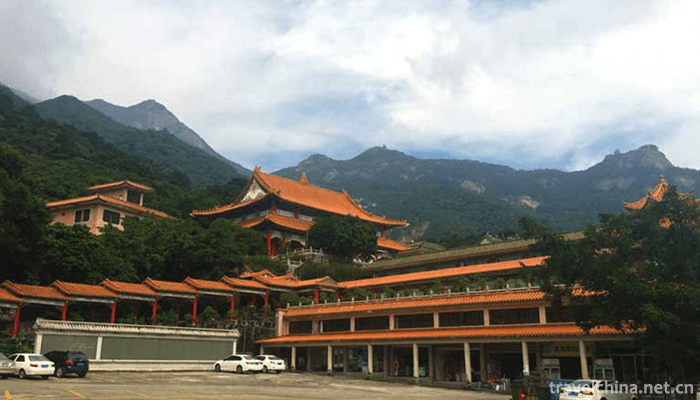


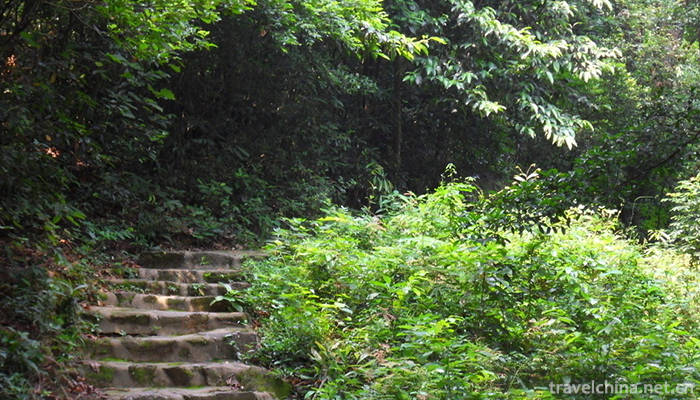
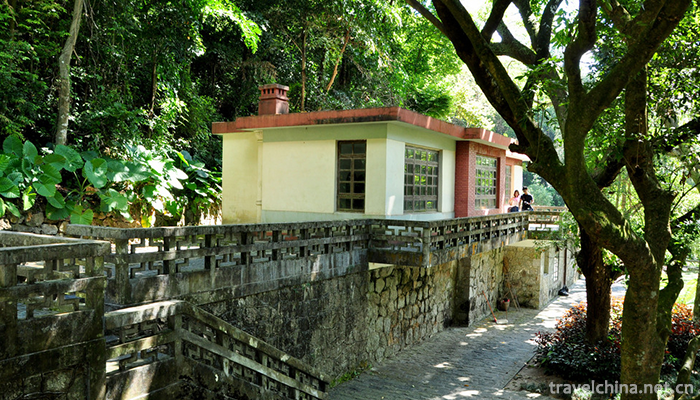
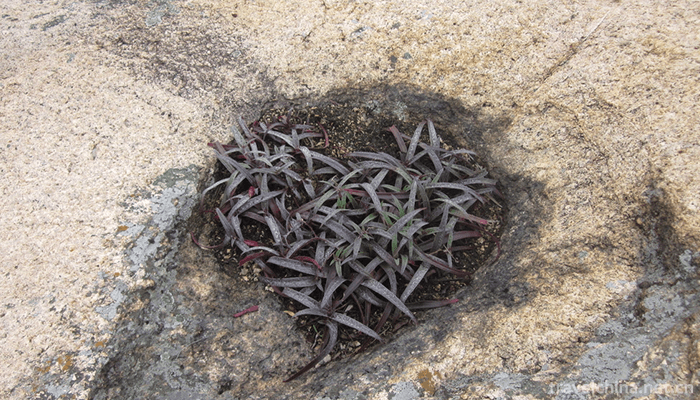

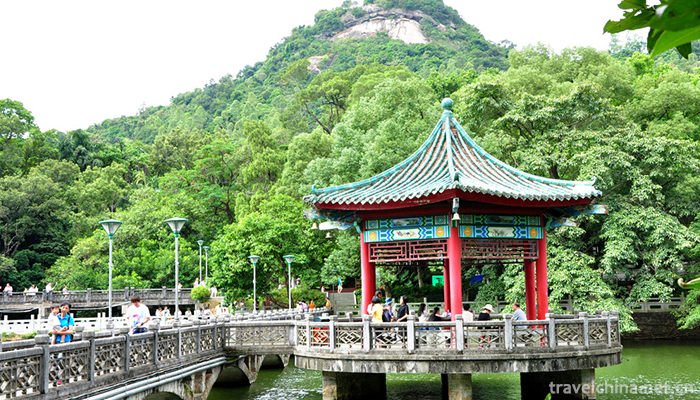
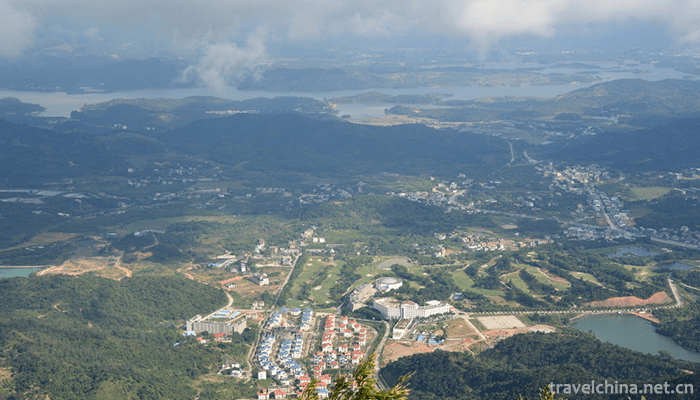


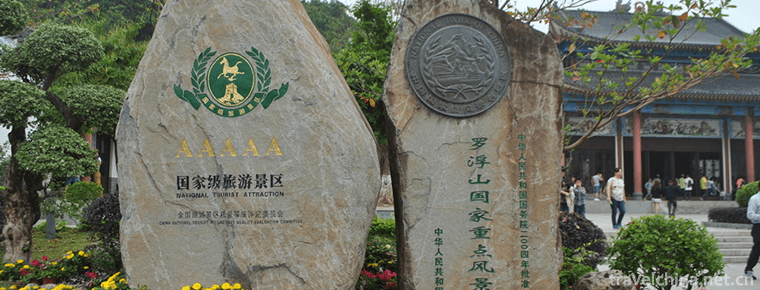
-
1.Guilin Happy Land Theme Park
Guilin Lemandi theme park Gudong Waterfall is suitable for sightseeing all the year round. April-October is the best time for Guilin tourism. The scenic spot is located in Guilin
Time 2018-12-12 -
2.Beijing World Flower Garden
The World Flower Grand View Garden is located on the north side of Nansi Ring Auxiliary Road and the east side of Jingkai Highway in Beijing. It has superior geographical position and convenient trans
Time 2018-12-26 -
3.Landscape Architecture in Yangzhou
Yangzhou gardens began in the Western Han Dynasty, flourished in the Sui and Tang Dynasties, matured in the Song and Ming Dynasties, and flourished in the Qianlong Period of the Qing Dynasty.
Time 2019-04-21 -
4.Construction Techniques of Wood Construction of Dong Nationality
Dong's wood construction and construction skills, the traditional architectural skills of Sanjiang Dong Autonomous County, Guangxi Zhuang Autonomous Region, one of the national intangible cultural her
Time 2019-04-28 -
5.Traditional Brewing Techniques of Brewing Wine
Chrysanthemum wine is a necessary drink for Chongyang Festival. It has a long history of brewing. Royal chrysanthemum liquor of Ming and Qing Dynasties was a kind of precious liquor created on the bas
Time 2019-06-09 -
6.Soil alkali firing technology
On June 7, 2008, the soil-alkali firing system was approved by the State Council and listed in the second batch of national intangible cultural heritage list.
Time 2019-06-23 -
7.Weaving and Dyeing Techniques of Uygur Felts and Printed Fabrics
Uygur felt, printing and dyeing technology, Xinjiang Uygur Autonomous Region Turpan (now Turpan) local traditional skills, one of the national intangible cultural heritage.
Time 2019-06-26 -
8.Forging Skill of Iron Painting in Wuhu
Iron painting originated in the Song Dynasty and prevailed in the Northern Song Dynasty. During the reign of Kangxi in the Qing Dynasty, iron paintings in Wuhu, Anhui Province, became self-contained a
Time 2019-06-29 -
9.Youyang Folk Songs
Youyang folk song is a rich and colorful folk culture created and accumulated by the Tujia, Miao and Han people in Youyang Tujia and Miao Autonomous County of Chongqing in the long practice of product
Time 2019-07-14 -
10.A er la bo er shu
Al r Bo Er (1162 to 1226) , Mongolia Famous general, Genghis Khan "Four Jun" is the leader of the founding fathers. Formerly known as "Er Chu". As a result of helping the young boy
Time 2019-09-14 -
11.Huainan Normal University
The school was founded in 1958 when it was a teacher's College in Huainan. In 2000, approved by the Ministry of education, the former Huainan normal school, Huainan Education Institute and Huainan nor
Time 2019-11-16 -
12.Transportation in Panzhihua
By the end of 2018, Panzhihua had 3733.91 kilometers of grade roads and 195 kilometers of expressways. In the whole year, the highway passenger traffic volume was 20.79 million person times, the passenger turnover volume was 597.18 million person kilometers,
Time 2020-12-14